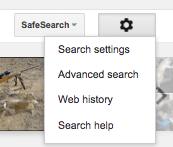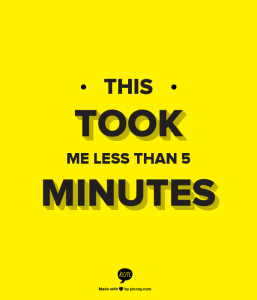In the internet age, everything seems to move fast, and marketing is no  exception. Even just the term “content marketing,” which has taken over to describe and shape a certain segment of the marketing world, only came into regular use in the past few years.
exception. Even just the term “content marketing,” which has taken over to describe and shape a certain segment of the marketing world, only came into regular use in the past few years.
In a constantly shifting landscape, with new tools and trends often seeming to come out of nowhere, predictions are tricky business. Nonetheless, Content Marketing Institute found 50 content marketing professionals prepared to make their guesses for the coming year.
My own prediction made the cut, putting me in some pretty fantastic company, here it is:
I think the main trend will be towards more. I don’t mean that in terms of quantity, but rather more formats, posts that pack in more useful information, and an acceptance that content marketing requires more time and effort than some previously realized.
If you think I’ve got it all wrong, tell me what you think in the comments. What’s your prediction for the next year?
I can only offer conjectures for the general state of content marketing in 2014, but I have absolute power over the goals and plans for Austin Copywriter’s content marketing in 2014.
If I publish it where everyone can see it, there’s no going back. So, without further ado:
1) Commit to publishing on this blog with more regularity.
My modest, but realistic goal for this is at least one post a month. I recognize more would be ideal, but as one person balancing my own marketing with client work, understand the importance of making sustainable commitments.
I’ll be the first to tell clients: less content of better quality will always beat out a higher quantity of content that’s sloppy and lazy.
2) Experiment with new content formats and channels.
I’ve already delved a bit into the world of content development that falls outside of my writing comfort zone. Part 1 in my new content marketing for small businesses video series is already out, and the rest of the series will be released in early 2014.
You can also check out my new SlideShare presentation on the Basics of SEO (Search Engine Optimization) for Small Businesses.
I aim to do even more with video, SlideShare, and images throughout 2014.
3) Develop and execute a content promotion strategy.
By seeking out more guest posting opportunities and building up relationships on social media, I plan to draw more attention and new subscriptions to the blog.
Like many people, I’ve learned the hard way that just creating good content and putting it out there isn’t enough. You have to develop a larger strategy that includes plans for promotion to get attention in an already overcrowded space.
4) Make regular, genuine contact with readers and others in the content marketing community a higher priority.
Relationships are hugely important in just about every aspect of life. This has only become more obvious to me in my years as a freelancer.
My goal is to build up a larger professional network of contacts that includes: readers of this blog, other marketers in Austin and online, other freelancers in a variety of industries, and small business owners excited about building their businesses with content marketing.
5) Attend local networking events and conferences to build a network and community of professional contacts of various skills and specialties.
Related to #4, I’ve found there’s no real substitute for meeting with other professionals in person, and attending live educational events. I’ve gotten a lot out of these experiences in the past year, and expect 2014 to be no different on that front.
Some of these are continuations of the business plan and content strategy I put together in 2013, but still of tantamount importance to my goals for the business.
What about you? Do you have a plan and strategy for the next year yet? Are there any questions or obstacles getting in the way of putting one together? Let me know, I’ll do my best to help.






